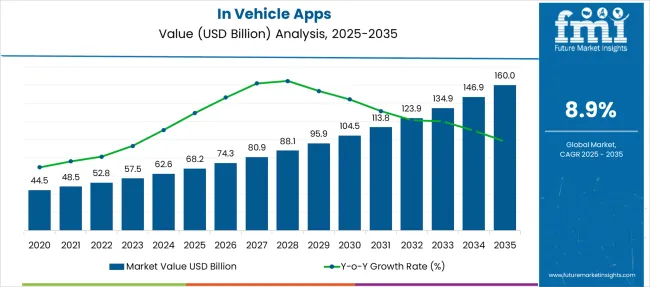
Tesla is about to tumble off a familiar policy cliff. The $7,500 federal tax credit that juiced demand for electric vehicles in the US, Tesla’s last large, healthy market, after September 30, 2025. Tesla has been here before, but the ground underneath the company looks very different today.
Let’s dig into what happened last time, what’s changing now, and why Elon Musk is already warning shareholders of “tough quarters ahead.”
We have been here before. Tesla lost access to parts of the federal tax credit for electric vehicles in 2019 and lost it fully by 2020.
Flashback: the 2019 credit phase‑out was painful—but survivable
- Trigger: Tesla crossed 200,000 cumulative US deliveries in July 2018, starting a timer that halved the credit to $3,750 on Jan 1, 2019, and again to $1,875 on Jul 1, 2019, before it went to zero on Jan 1, 2020.
- Tesla’s playbook: On Jan 2, 2019 the company shaved $2,000 off the sticker of every Model S, X, and 3 to “partially absorb” the lost incentive.
- Demand whiplash: The price cut wasn’t enough to avoid a huge pull‑forward. Deliveries spiked in Q4 2018, then fell 31 % QoQ in Q1 2019.
- Fast recovery: Thanks to Model Y’s arrival and virtually zero credible EV competitors, Tesla ended 2019 with 367,500 global deliveries (‑US dip only 1 %) and roared back to 499,550 in 2020.
Last time, the phase-out was gradual, enabling Tesla to fill the hole with price cuts.
Advertisement – scroll for more content
Most importantly, the phase-out period coincided with the launch of Model Y, which never had full access to the federal tax credit, allowing Tesla to grow in the US without it.
The 2025 sunset hits everyone, but it hurts Tesla most
The situation in 2025 is vastly different. Firstly, the EV market has undergone significant changes in the US. Tesla is still the biggest brand, but it’s nowhere near where it was 5 years ago:
| 2020 cliff | 2025 cliff |
|---|---|
| Who lost the credit? Only Tesla and GM | Every OEM, but Tesla sells the most EVs |
| Competitive field < 15 mainstream EVs on sale | > 60 credit‑eligible models in showrooms |
| Tesla US share ~75 % of EVs | 46 % in Q1 2025 and sliding |
| Gross margin cushion ~22 % automotive | ~17 % in Q1 2025 after a year of price cuts |
Furthermore, the impact of the tax credit was greater in the latest version. The Biden administration reinstated Tesla’s access to the $7,500 tax credit for electric vehicles in 2022 through the Inflation Reduction Act (IRA).
However, it became even more attractive in 2024 when the government made it a “point-of-sale” incentive, which was applied directly to the vehicle’s price rather than as a rebate on taxes.
Going from that to nothing is expected to have a greater impact on demand for electric vehicles in the US.
What can Tesla do this time?
As last time, Tesla is expected to cut prices to compensate for the tax credit’s expiration.
However, Tesla has slimmer gross margins than it did previously, and it is not expected to be able to cut prices enough to compensate for the $7,500 price difference.
In addition to cutting prices, Tesla is expected to launch a stripped-down version of the Model Y with fewer features, which should significantly reduce the base price of its most popular model.
It should help with demand and avoid a greater reduction in Tesla’s production line capacity in Fremont and Austin, but with less value than the current versions of the Model Y, it is expected to cannibalize the more expensive versions of the best-selling vehicle mostly.
| Key Take‑away | 2018‑20 Phase‑out | September 30 2025 Sunset (forward‑looking) |
|---|---|---|
| Trigger | Tesla hit 200 000 cumulative U.S. EV deliveries in July 2018; credit stepped to $0 on 1 Jan 2020. | Statutory clean‑vehicle credit (up to $7 500 new / $4 000 used) ends for all manufacturers on 30 Sep 2025 under the IRA sunset clause. |
| Immediate demand reaction | Pull‑forward surges before each step‑down (Q4 2018, Q2 2019) followed by soft Q1 2019 deliveries (‑31 % QoQ). | Dealers already advertising “buy before it’s gone,” and analysts expect a Q3 2025 bump. |
| Volume impact in the first full no‑credit year | Tesla U.S. sales dipped only 1 % in 2019 and re‑accelerated +50 % in 2020 despite $0 credit, helped by Model Y launch and limited competition. | Competitive landscape is radically different—Tesla’s U.S. EV share has slipped from 62 % in 2022 to 46 % in Q1 2025. Demand is more price‑sensitive. |
| Profit levers used | $2 000–$3 000 price cuts, feature unbundling, and manufacturing scale offset lost credit. | To replicate prior success Tesla would need deeper price moves or zero‑interest financing, pressuring gross margin already down ~650 bps YoY by Q1 2025. |
| Strategic cushion | First‑mover advantage; few high‑volume rivals. | 60+ eligible models from 17 brands compete in sub‑$60 k bracket; used‑EV market growing; interest‑rate environment still elevated. |
Electrek’s Take
Shareholders should brace for the worst here. I know many of them have been holding on to the fact that Tesla did quite well after the removal of the tax credit last time, but as explained above, this time is entirely different.
The US has been Tesla’s only somewhat healthy market amongst the large automotive markets (US, Europe, and China). That’s because it is an uncompetitive market when it comes to electric vehicles.
Foreign EVs are not eligible for the tax credit, and Chinese EVs are subject to a 100% tariff.
The result is that Tesla was able to maintain a 45% (but declining) market share in the US EV market, compared to just 9% in Europe and 4% in China.
Now, demand for electric vehicles in the US is expected to crash.
Tesla CEO Elon Musk knows that he has warned that the automaker might face some “tough quarters” in “Q4 2025, and Q1 and Q2 2026.” After that, he expects Tesla to do well thanks to autonomous driving, but he has been consistently wrong about that for years.
I think the crash in demand will be accentuated in Q4 due to demand being pulled forward in Q3, which is likely to be Tesla’s last good quarter for a long time.
We are about to see Tesla’s sales decline, most likely sharply, in the US, while they have already crashed in Europe and are experiencing a decline in China due to intense competition.









